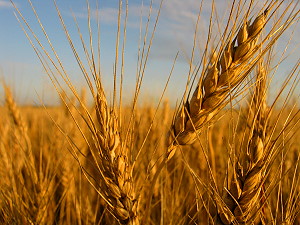 Northwest Region Crop Report Prepared by: Manitoba Agriculture August 15, 2016 |
Northwest Region Crop Report Prepared by: Manitoba Agriculture August 15, 2016 |
Northwest Region
There was unsettled weather throughout the Northwest Region over the week, with intermittent showers and poor drying conditions. Rainfall amounts varied with 12 to 50 mm in Swan River, up to 40 mm in The Pas, and trace to 10 mm through Roblin and Dauphin areas. Soil moisture conditions are variable, ranging from adequate in most areas to excessive in those areas receiving high rainfall amounts over the last couple of weeks. In general, most field crops throughout the region continue to mature and are in relatively good condition, with the exception of crops in those areas impacted by too much moisture.
Crops are advancing with fall rye, perennial ryegrass and winter wheat harvest continuing in the Dauphin and Roblin areas, as weather permitted. Some barley has been harvested in the Ste. Rose area. Spring wheat is maturing and throughout the region with reports of some fields receiving pre-harvest herbicide application. Canola continues to develop with 100% of the canola fields podding and some canola swathed in the Dauphin and Swan River areas. Field peas are also advancing with most fields podded; reports of some fields being desiccated and a small number of acres were harvested in the Swan River area. Soybeans, for the most part, are at R3 stage.
Some crop lodging due to rain and/or wind is evident throughout the entire region and crop damage due to excessive moisture is evident in lower areas in fields. Aster yellows are reported in canola in the Roblin and Swan Valley areas at relatively low levels. Some oat blast in the Roblin area has been reported and fusarium head blight is present in spring wheat throughout the region. White mould and powdery mildew is reported in some pea fields, as well as sclerotinia in canola where fungicide was not applied.
Weather continues to delay first cut hay harvest. Heavy rains in some areas have made fields impassable. Due to the late harvest and the hay crops receiving rain when in the swath, feed quality will be below average. Some second cut hay has been put up with producers opting to make silage. Annual crops are being harvested for greenfeed and silage with above average yields reported. Pastures are rated average to good and livestock water supplies are adequate.
